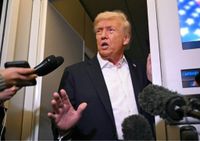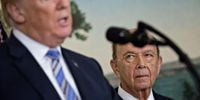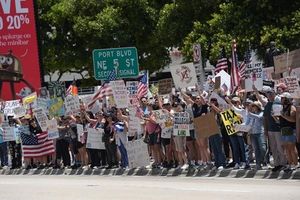In the latest escalation of economic hostilities between the United States and China, a high-stakes contest over rare earth minerals and advanced technology is sending shockwaves through global supply chains, defense industries, and international markets. With both superpowers wielding their dominance over critical materials and regulatory levers, the world is watching as the battle for technological supremacy enters a volatile new phase.
On October 9, 2025, China’s State Administration for Market Regulation announced a sweeping expansion of export controls on rare earth elements, adding five more metals to a list of seven already restricted since April. According to RFE/RL, these new rules will require foreign companies to obtain special approvals from Beijing for the export of rare-earth magnets and semiconductor materials containing even a trace—just 0.1 percent—of rare earth metals. In a move targeting the military sector, companies with any affiliation to foreign militaries, including those of the United States, will be largely denied export licenses.
Just a day later, President Donald Trump responded in kind. As reported by multiple outlets, Trump declared that the U.S. would impose a new 100% tariff on all imports from China, effective November 1, 2025—on top of any existing tariffs. The U.S. Trade Representative’s office confirmed the measure, framing it as direct retaliation for what Washington sees as China’s attempts to weaponize its dominance in critical materials. The timing of these announcements, just weeks before a possible summit between Trump and Chinese leader Xi Jinping, underscores the high-stakes brinkmanship now defining U.S.-China relations.
China’s grip on the world’s rare earth supply is almost unrivaled. As the BBC and RFE/RL have noted, China controls more than 70 percent of global rare-earth mining, 90 percent of their separation and processing, and an astonishing 93 percent of magnet manufacturing. These 17 obscure elements, with names like neodymium and dysprosium, are the backbone of modern technology—essential for everything from electric vehicles and wind turbines to advanced semiconductors, F-35 fighter jets, and smart bombs.
Wilbur Ross, former U.S. Secretary of Commerce, warned in a Fortune interview on October 13, 2025, that Beijing’s export controls amount to a “disguised rationing system” designed to give China leverage over the United States. “Rare earths are a very useful weapon for China,” Ross said. “For giving up a little bit of revenue, they are achieving a pretty good bang for the buck.” He elaborated that the new registration and licensing requirements could mask deliberate slowdowns in approvals, allowing China to ration supply to U.S. manufacturers without formally breaching trade agreements. “It’s a very effective weapon … and it attacks our high-tech things and our national defense needs.”
The implications are immediate and severe. Ross cautioned that U.S. industries could face critical supply strains within six to twelve months if trade tensions persist. Ford Motor has already publicly warned it might have to idle at least one factory if rare earth supplies tighten further, as reported by Fortune. While some American companies built up stockpiles at the start of the trade war, Ross called these reserves “a rounding error,” insufficient to stave off production shutdowns in the event of prolonged shortages. “No one knows exactly how big the excess quantities of rare earths that American companies built up are,” he said. “But you probably would have some shutdowns if this standoff continues.”
The defense sector is especially vulnerable. According to the Center for Strategic and International Studies (CSIS), the new Chinese restrictions represent “the most consequential measures to date targeting the defense sector.” Advanced weapons systems—from F-35 jets and submarines to radar systems, Predator drones, smart bombs, and Tomahawk missiles—rely heavily on rare earth elements. The U.S. and its NATO allies, who are supplying arms to Ukraine, could see their military support efforts hampered by these new controls, as RFE/RL reported. Stockpiled reserves may cushion the immediate blow, but the long-term supply chain is now in question.
Qualcomm, one of America’s leading semiconductor companies, is also caught in the crossfire. On October 10, 2025, China’s State Administration for Market Regulation announced an antitrust investigation into Qualcomm’s acquisition of Israeli chip designer Autotalks, a deal completed in June 2025 for under $100 million. As detailed by Oilprice.com and others, the investigation centers on Qualcomm’s failure to notify Chinese regulators—a requirement under China’s anti-monopoly laws. Qualcomm acknowledged the oversight but has not commented further. Despite the regulatory scrutiny, the company is pushing ahead with integrating Autotalks’ technology into its automotive product lineup, signaling its commitment to V2X (vehicle-to-everything) communications and automated driving solutions.
This regulatory probe is widely seen as a direct response to U.S. trade actions, highlighting how enforcement measures and trade policies are now central to both governments’ strategic agendas. As the U.S. and China double down on controlling critical technologies and materials, multinational corporations face an increasingly complex landscape. Navigating divergent regulatory frameworks, trade barriers, and heightened scrutiny on mergers and acquisitions has become a daily challenge for firms like Qualcomm.
The ripple effects extend far beyond the U.S. and China. European firms are already feeling the pinch from slow export license approvals in Beijing, as the European Chamber of Commerce in China recently noted. The new restrictions “add further complexity to the global supply chains of rare earth elements,” with officials reporting backlogs in export license applications following the April restrictions. European governments, concerned about their ability to support Ukraine and maintain advanced manufacturing, are scrambling to diversify their sources.
To offset dependence on China, countries like the U.S., EU, and Pakistan are exploring alternative suppliers. Pakistan signed a $500 million memorandum of understanding with US Strategic Metals in September, with the first batch of rare earths arriving in early October. Central Asia, particularly Kazakhstan, is drawing attention after announcing the discovery of over 20 million metric tons of rare earths—potentially the world’s third largest reserves, pending confirmation by international firms. However, the Atlantic Council cautioned that high transit costs, underdeveloped export infrastructure, and a risky investment climate make Central Asia an uncertain bet in the short term. “Quickly securing critical mineral partnerships is vital to US efforts to reduce dependence on China. However, the United States should be wary of unrealistic expectations for what Central Asia can provide,” their report stated.
Meanwhile, domestic processing plants are under construction in the U.S. and Europe, but Wilbur Ross warned they won’t be operational soon enough to address immediate supply risks. “We have a timing disconnect,” Ross observed. “China is acting now.”
Looking ahead, the potential for further escalation looms large. Lawmakers in Washington have floated the idea of tightening advanced AI chip exports to China, but Ross cautioned that such a move could trigger a dramatic response—possibly even a blockade on Taiwan, home to Taiwan Semiconductor Manufacturing Co. (TSMC), which produces more than 90 percent of the world’s most advanced chips. “That would be catastrophic,” Ross said, emphasizing the stakes for global technology markets.
The contest over rare earths and advanced technology is no longer a distant geopolitical chess match; it’s an urgent, real-world struggle with consequences for economies, national security, and the future of innovation. As both sides harden their positions and the world scrambles for alternatives, the outcome of this technological tug-of-war remains uncertain—but its impact is already being felt across the globe.






